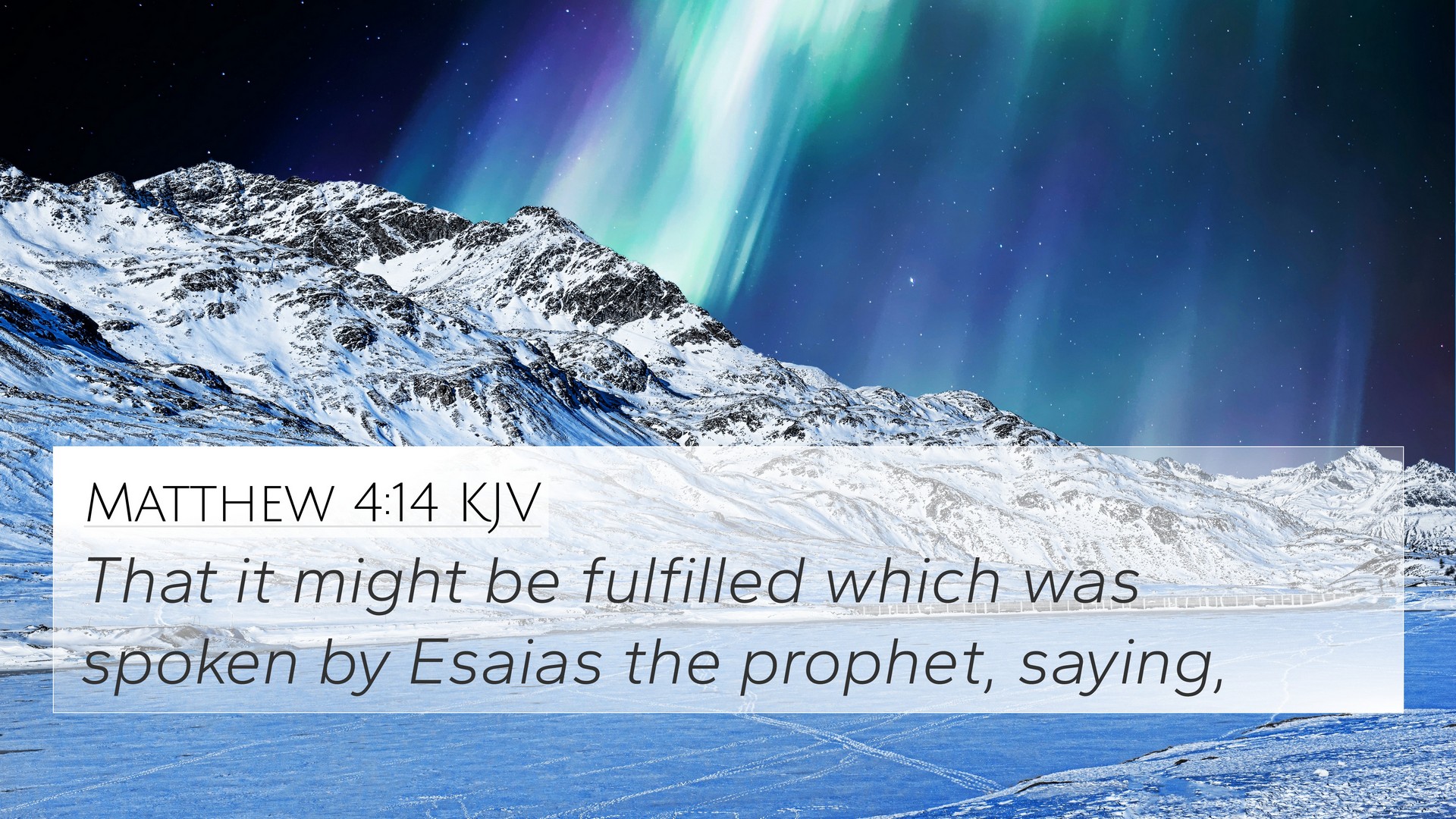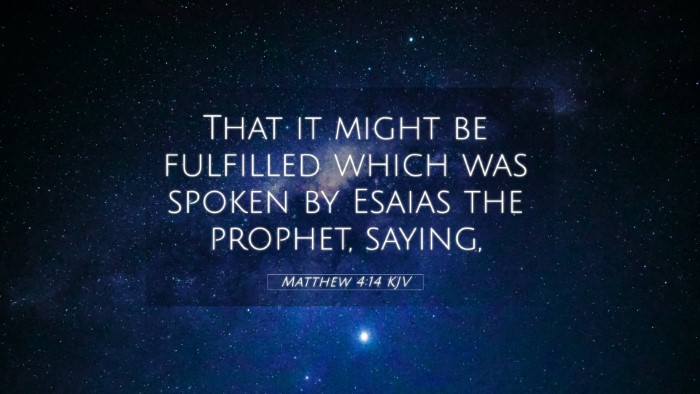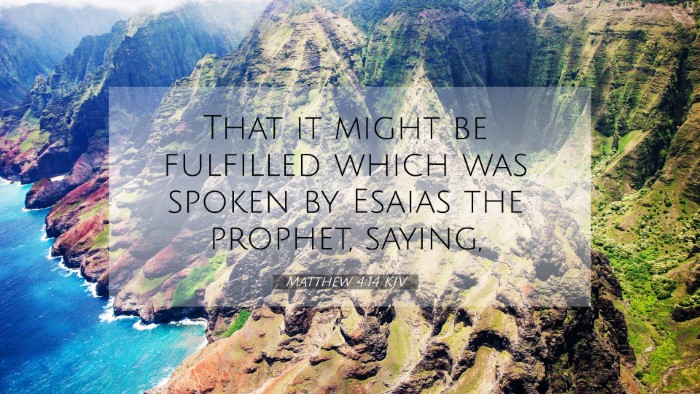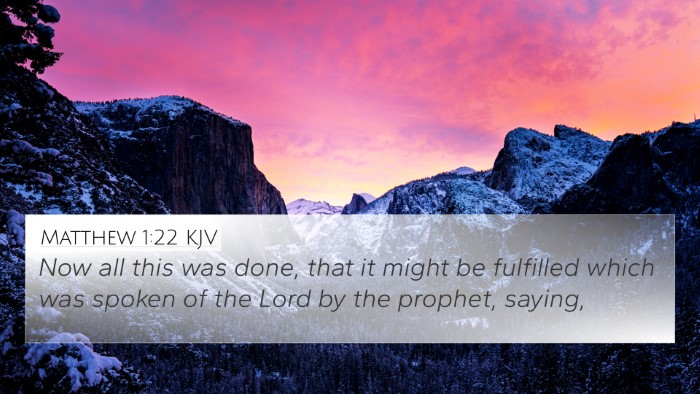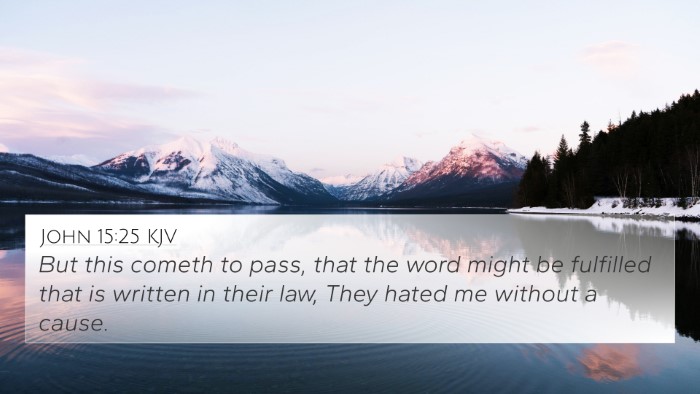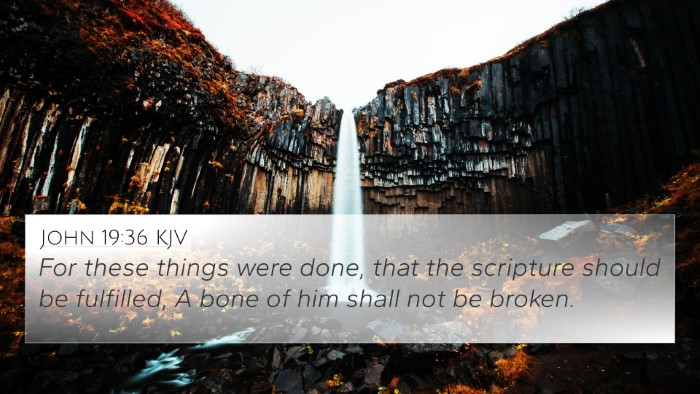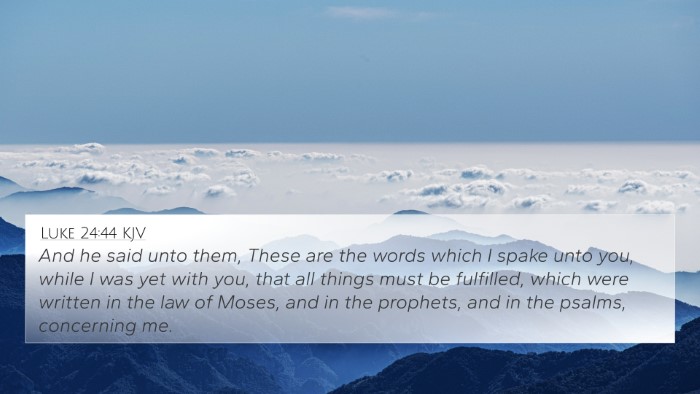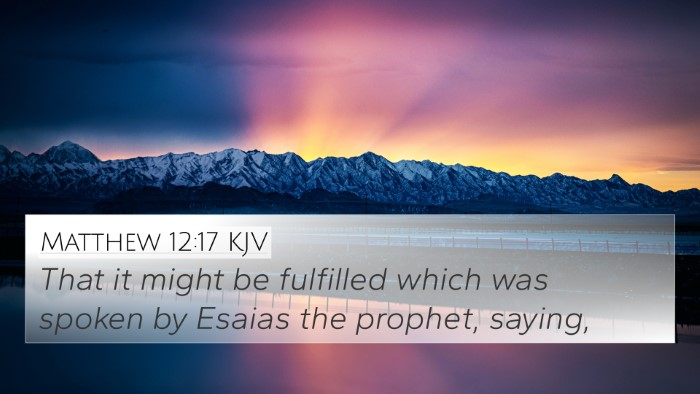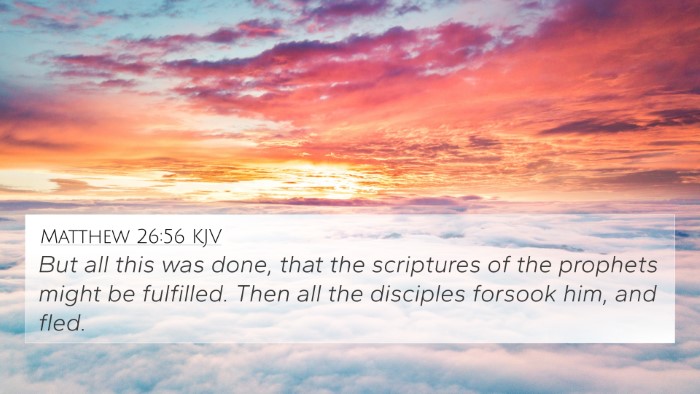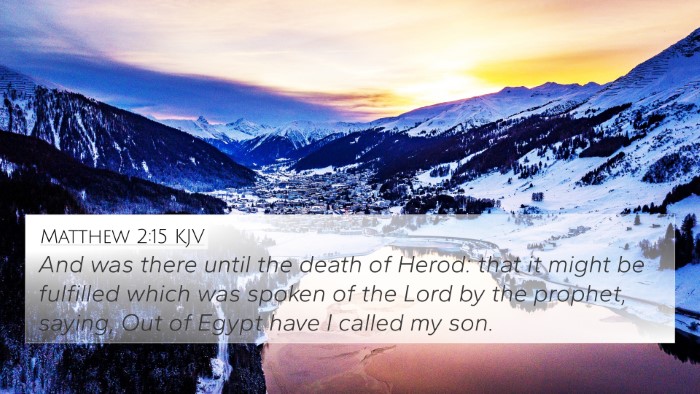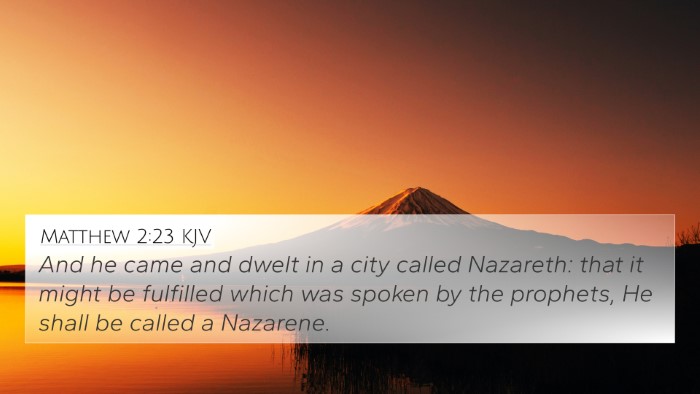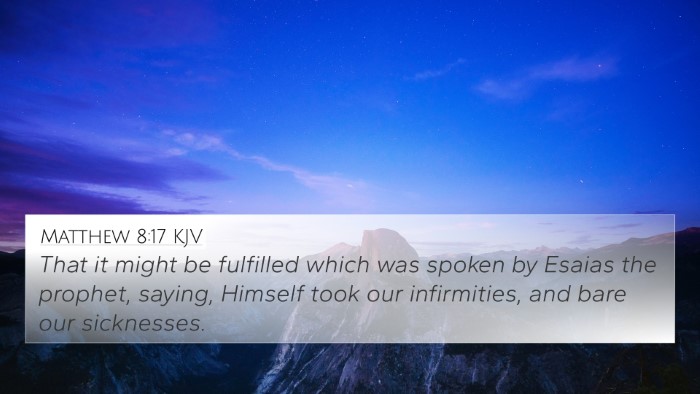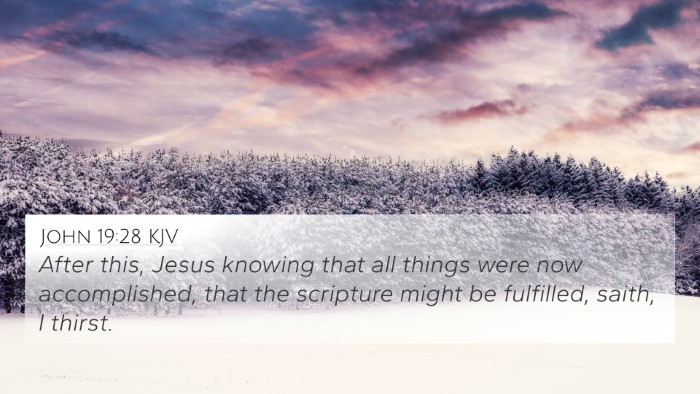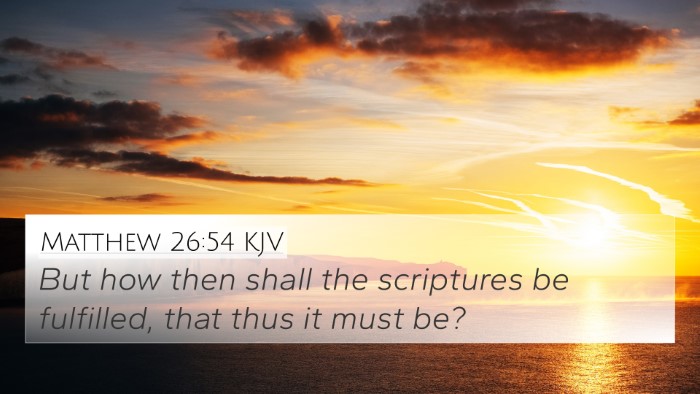Understanding Matthew 4:14
Matthew 4:14 is a significant verse within the Gospel of Matthew that lays groundwork for prophetic fulfillment and sets the stage for Jesus's ministry in Galilee. Below, we explore the meaning of this verse through insights drawn from renowned public domain commentaries.
Verse Context
Matthew 4:14 reads: "That it might be fulfilled which was spoken by Esaias the prophet, saying." This verse ties into the broader theme of prophecy fulfillment, which is central to the narrative of Christ's life and ministry.
Commentary Insights
-
Matthew Henry:
Henry remarks that the fulfillment of prophecy demonstrates God's sovereignty and foreknowledge. The reference to Isaiah emphasizes that Christ’s actions were not random but part of a divine plan, essential for validating His Messiahship and nurturing faith in His followers.
-
Albert Barnes:
Barnes notes that the verse indicates the importance of recognizing prophetic scriptures in the context of Jesus’s ministry. He underscores the need for believers to be aware of how the Old Testament directly points to New Testament realities, thereby encouraging a deeper understanding of Scripture.
-
Adam Clarke:
Clarke emphasizes that the reference to Isaiah confirms Jesus as the awaited Messiah. He argues that this not only bolsters faith in Him but also reinforces the necessity of understanding the inter-Biblical dialogue between the prophets and the New Testament writers.
Cross-References
This verse can be connected to several other Scriptures that underscore its themes:
- Isaiah 9:1-2: Addresses the light that will shine in darkness, prophetic of Jesus’s ministry in Galilee.
- Matthew 1:22-23: This passage highlights the significance of fulfilled prophecy, directly connecting to Christ’s birth and identity.
- Luke 4:16-21: Jesus reads from Isaiah in the synagogue, affirming His mission as the fulfillment of prophecy.
- John 1:4: Proclaims Jesus as the light of the world, linking back to the imagery used in the Isaiah prophecy.
- Acts 13:47: Illustrates the inclusion of Gentiles in the ministry, reaffirming the messages of hope and salvation stemming from Old Testament prophecies.
- Matthew 16:13-16: Establishes Peter’s declaration of Jesus as the Christ, a testament to His prophetic fulfillment.
- Romans 15:12: Quotes Isaiah, affirming the Gentiles' hope through Christ as part of prophetic intention.
Thematic Connections
The verse also evokes several thematic connections across Scripture:
- Divine Foreknowledge: The reference in Matthew 4:14 illustrates God's eternal plan articulated through the prophets.
- Light in Darkness: Both Isaiah and Matthew highlight Jesus's role as a guiding light, particularly in regions seen as spiritually lost.
- Salvation to Gentiles: The implications of Jesus's ministry extend beyond Israel, demonstrating God's universal offering of salvation.
Tools for Further Study
Those seeking to understand cross-references in the Bible may utilize various resources:
- Bible Concordance: A tool that provides an alphabetical list of words and their corresponding verses.
- Bible Cross-Reference Guide: This guide helps identify related Scriptures based on shared themes or phrases.
- Cross-Reference Bible Study: Methods and practices that promote a deeper exploration of Scripture through connected themes.
- Comprehensive Bible Cross-Reference Materials: Many editions of the Bible include cross-reference indices to aid in thematic studies.
Conclusion
In studying Matthew 4:14, one observes the profound connections woven throughout Scripture that affirm Jesus's role as the Messiah. By engaging with cross-references and employing tools for deeper study, believers can enrich their understanding of biblical themes and how they interconnect, ultimately enhancing their spiritual journey.
Final Thoughts
The exploration of Matthew 4:14 not only illustrates the importance of prophecy in the ministry of Jesus but also invites readers to delve deeper into inter-Biblical dialogues, enriching their faith and understanding of the scriptures.
